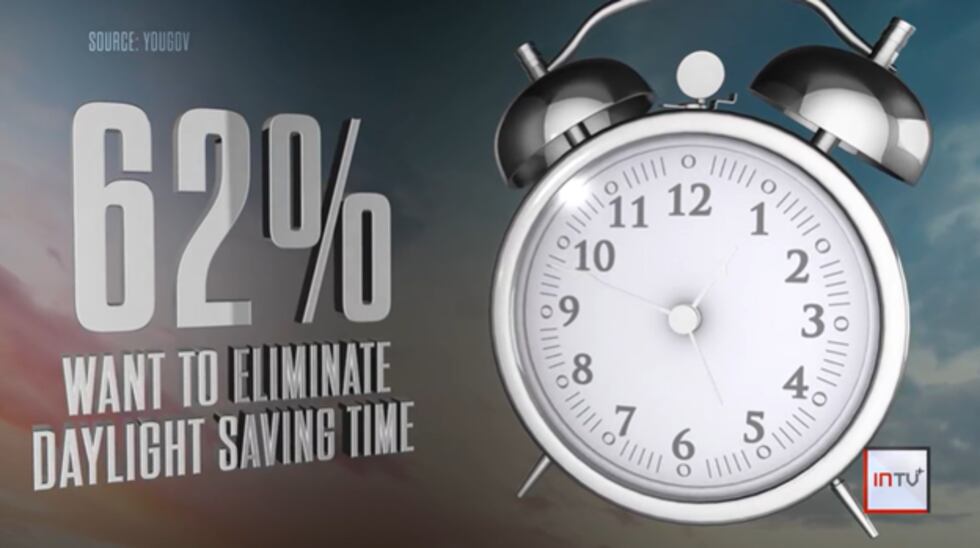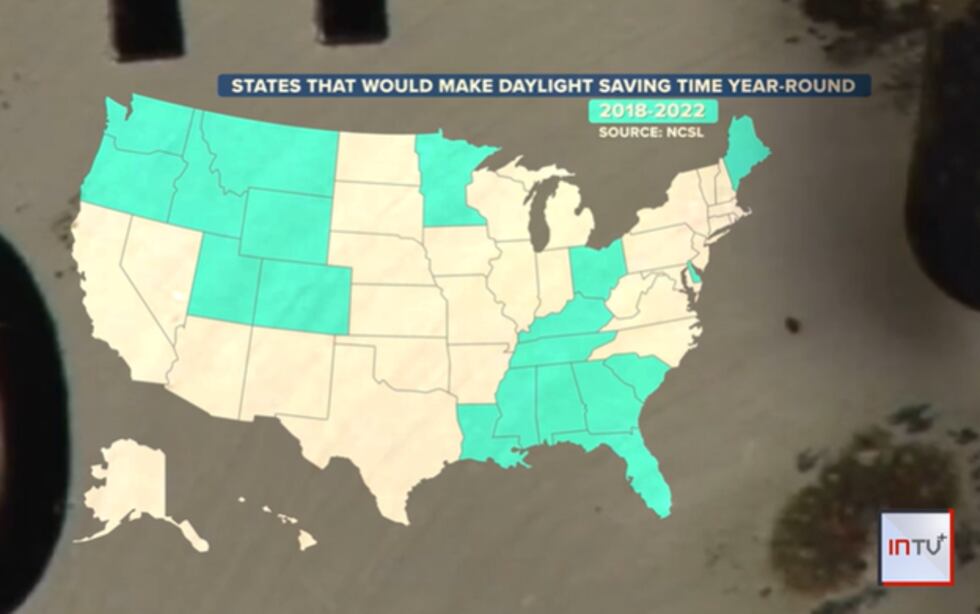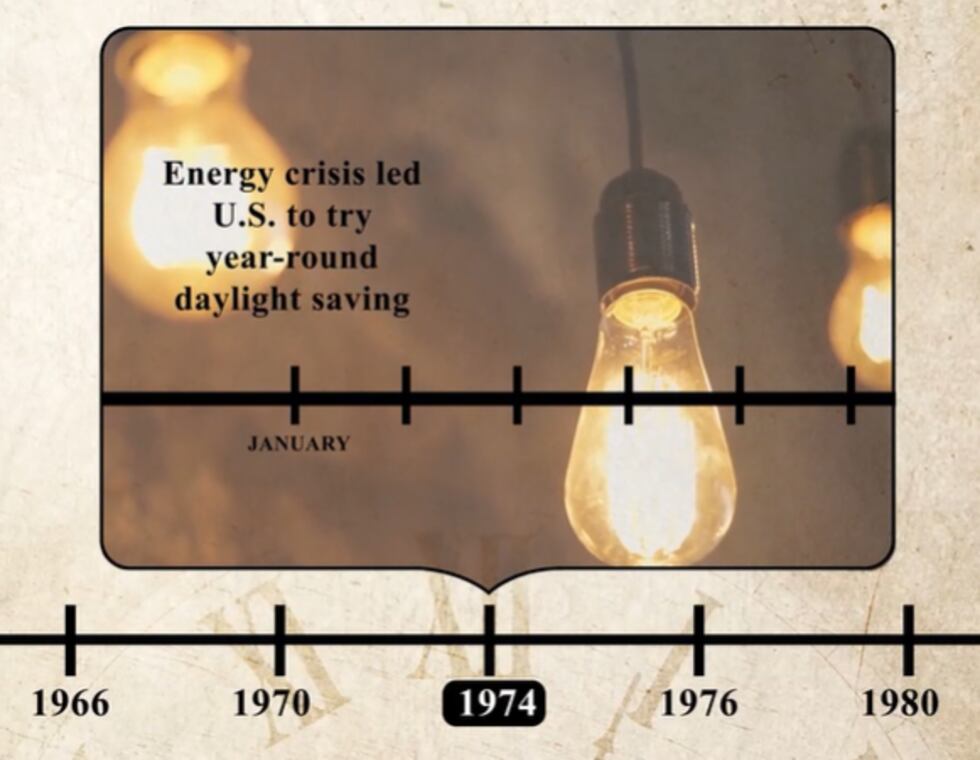(InvestigateTV) — Whether you love it or hate it, daylight saving time changes clocks twice a year in almost every state in the U.S.
We ‘Spring forward’ in March and ‘Fall back’ in November.
Now, there is major momentum toward ditching the practice. A 2023 ‘YouGov’ poll found over 60% of Americans want to eliminate the back-and-forth, but which clock do Americans want to keep year-round?

For more than five decades, Donny Sobel has had his eyes locked on clocks.
Sobel repairs, restores and sells these keepers of time at his family-owned shop in Virginia.
“Every day is different. There’s never two days in a row that are copies of each other,” said Sobel.
One of his least favorite times of the year is the one-hour shift that marks the start and end of daylight saving.
“It’s a pain in the neck! It’s just a routine that doesn’t need to happen.”

Sobel’s disdain for the bi-annual clock switching, in large part, has to do with the impact it has on his business.
“After the time has changed, we get the phone calls for people that have incorrectly set their clock ahead or back. They do it in the wrong way. They can’t figure out why their clock is striking one different than the hour hand is pointing to.”
Aside from the malfunctioning clocks he then has to fix, Sobel doesn’t recall anyone in his store being a fan of ‘Springing ahead’ or ‘Falling back.’
“We’ve done our own surveying of opinions for a long time. Nobody wants to move the hands, nobody wants to change the time, and nobody finds it necessary.”
His customers are not alone in disliking the current system of time changes.
Over the last six years, 19 states have approved bills or resolutions that would make daylight saving time year-round if Congress were to allow such a change.

David Prerau is a historian of daylight saving time. He told InvestigateTV+ that a change like many states want is not that simple.
“It was made uniform in 1966,” he said
Prerau explains that federal law, under the Uniform Time Act, permits states to opt out of daylight saving as Arizona and Hawaii have done. That means they don’t turn their clocks forward an hour in March and instead stay on standard time. But, states do not currently have the authority to enact permanent daylight saving time.
Prerau believes daylight saving is so contentious because it impacts almost everyone’s daily life.
“In the spring, summer and fall, if you move up the clock an hour, it moves the sunrise and sunset back an hour. And you lose an hour of sleep – now of course you gain an hour of sleep in the fall.”
The historian pinpointed the origin of daylight saving time as an energy-saving measure during World War I.
“The Germans put in daylight saving time for the first time to save energy for the war effort. And when the U.S. got involved with the war in 1918, we put in daylight saving time as well.”

In 1974, Prerau said an energy crisis led the U.S. to try year-round daylight saving time for the first time.
“In places like Minneapolis and Indianapolis, you would get sun rises about 9 a.m. and if the sun is rising at 9 a.m., it means everybody’s waking up in the dark, going to work in the dark, and most importantly to a lot of people sending their kids to school in the dark.”
The policy was repealed just ten months later.
More recently, a bipartisan group of lawmakers including Sen. Ed Markey and Sen. Marco Rubio has repeatedly pushed for permanent, year-round daylight saving time. They say it allows for more outdoor activity after school and work. Also, the group points to studies that found lower crime rates when there’s an extra hour of evening daylight.
Their proposed ‘Sunshine Protection Act’ unanimously passed in the Senate in 2022, but it never made it to a vote in the House.
Watch the InvestigateTV Livestream for more videos from InvestigateTV+
Dr. Emerson Wickwire is a sleep specialist at the University of Maryland School of Medicine and one of many experts who believe the twice-yearly time change should be eliminated. The difference is Wickwire believes permanent standard time is the way to go.
“Permanent daylight saving time is the worst possible option.”
The American Academy of Sleep Medicine published in a position statement that standard time “aligns best with human circadian biology”.
“The circadian rhythm is very very fine-tined, very sensitive. What permanent daylight saving time does is expose our bodies and brains to light at exactly the wrong time. This leads to chronic sleep loss, and adverse health events ranging from cardiovascular events including stroke and heart attack, to even symptoms of depression and suicide attempts.”
His other big concern from a health perspective has to do with those late sunrises associated with year-round daylight saving.
“This places our children at risk, they would be standing at the school bus stop in the pitch black.”

In 2025, the daylight saving changes happen on March 9 and November 2.
Experts shared the following tips for families with children on how to prepare for the change:
- Two to three days prior to the clock switching, gradually shift your sleep and waking times by about 15 minutes earlier than normal
- Aim for teens and kids to get at least eight hours of sleep while adults should target at least seven hours
- The day after the clock springs forward, head outdoors for early morning sunlight to help regulate your internal clock
A survey completed by the American Academy of Sleep Medicine found more than 55% of Americans report feeling tired after time changes.
Copyright 2025 Gray Media Group, Inc. All rights reserved.